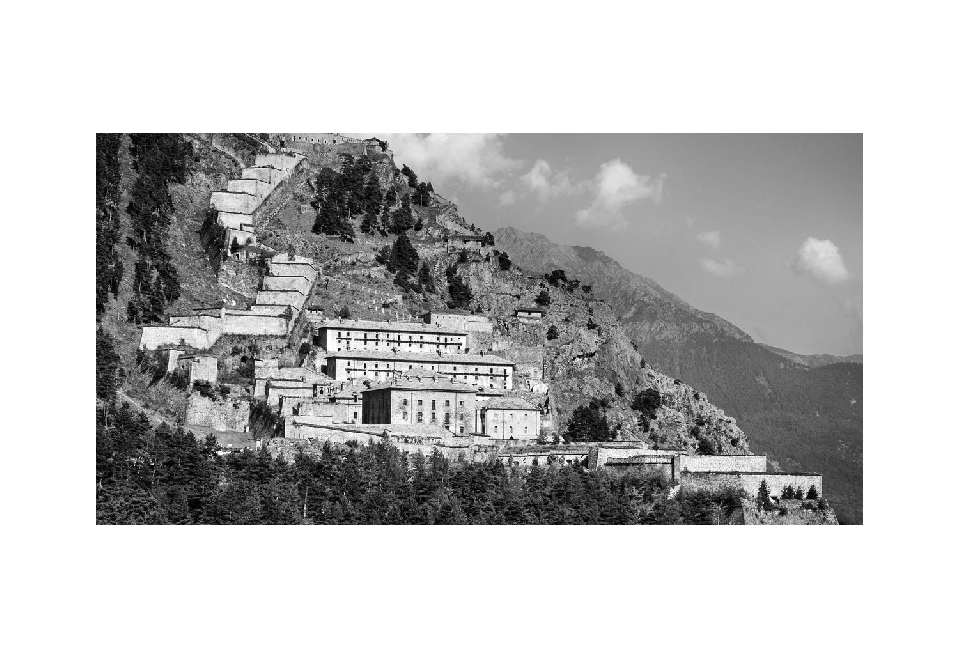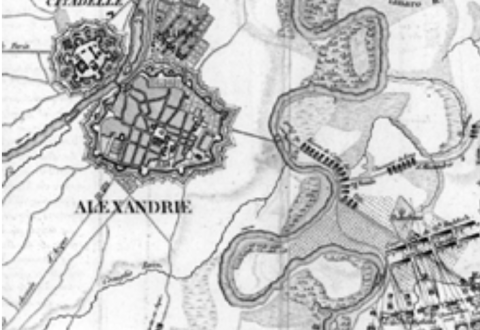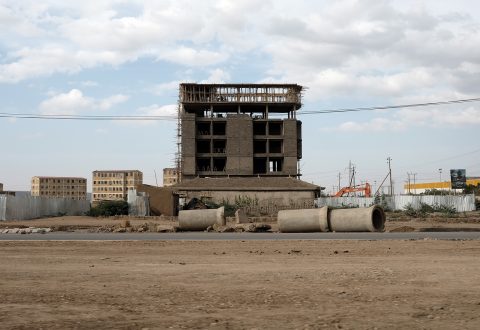Reactivation of non-performing cultural heritage
Borgo Medievale, Borgo Castello and Fenestrelle Fortress
Definition of a recovery strategy of three cultural sites nowadays underused, underexploited and in differing– but progressive – states of decay. The aim of this multi-disciplinary research is twofold: (1) identify the intrinsic latent potential of these three pieces of Piedmont’s cultural heritage; (2) design a new strategy for the activation of the latent potential, pursuing the preservation and enhancement of the assets under investigation. The aim of the research project is to establish a link between the three sites and the resources of the regions, which are peripheral and affected by gradual reduction in tourist flow. The project has three main objectives: (1) to improve the awareness and comprehension of the cultural heritage under investigation; (2) to bring together heritage and landscape so as to offer new ways to benefit from their combined social, economic, cultural and environmental values; (3) to promote and diversify cultural tourism so as to balance the exploitation of the different cultural resources, both in remote peripheral areas and high demand areas nowadays overexploited.
Year
2019
Scientific director
Research coordinator
Architectural project
Lucia Baima, Matteo Robiglio, Elena Vigliocco, in collaboration with Temirlan Nurpeissov, Riccardo Ronzani
Management project:
Giulio Zotteri, Roberta Taramino, in collaboration with Carlotta Reviglio
Operative coordinator
Tags
#Architecture #NonPerformingLegacies
Type
Research project

Publication available here
Over the last two decades, the number of sites under protection has increased exponentially all over the world. As an example, in 1973, the World Heritage List included only 12 sites; nowadays the number of sites has increased to 1092. While the number of cultural heritage sites is progressively increasing, the great economic recession has produced a significant contraction and redistribution of public investments. This contraction has serious repercussions on spending capacity at all levels: the contraction of purchasing
capacity – deflation – leads to decreased production and employment and the need to redistribute state investments to prioritise the essential spending items, such as health, infrastructure, school and social care. This explains why in the 1990s investment in cultural heritage was concentrated on a few specific heritage highlights – such as the Palace of Venaria –, whilst today public efforts support sustainable policies and inclusive projects involving private stakeholders. In this new and more eclectic scenario, cultural tourism can play an important role for the development of those cultural sites and regions that include unknown and underused cultural resources, acting as the economic resource completing traditional public investment. Nowadays, each cultural itinerary is a regional project, grounded in the virtuous circle between the highly-related elements, resource, project and region. Cultural regions exist thank to projects developed taking into account their resources. In the same way, a project can generate new resources in the regions involved. Thanks to the development of new regional projects and through marketing strategies, regions can increase their cultural tourism attractiveness.
The Borgo Medievale in Turin, the Fenestrelle Fortress and the Borgo Castello in Venaria Reale are three assets of cultural heritage that belong to three different sites with different characteristics. They have three elements in common: firstly, they are classified as monuments because of their historical importance; secondly, they are now used for cultural purposes because they have lost their original vocation; thirdly, despite their cultural value, they suffer from the phenomenon of undertourism.
Three are the main causes of undertourism: firstly, the cultural site is not easily accessible because it is isolated or not located along typical tourist routes; secondly, the number of surrounding destinations and the consequent increase in competition is decreasing the number of tourists per heritage site; thirdly, lack of attractiveness. In relation to the latter, good destination management and marketing and a huge amount of government attention and funding characterise an attractive site.
These sites belong to the category of non-performing legacy (NPL) for the following reasons: (1) they experience a condition of risk linked to abandonment; (2) because of their original purpose, their renovation to new uses is difficult and complex. In order to safeguard this NPL, it is necessary to redefine its economic mechanism, which no longer boils down to simply cyclically injecting public money.
Borgo Medioevale in Turin
The Borgo Medievale is part of Turin’s Museum circuit. The village is the fascinating idea of Portuguese architect Alfredo d’Andrade. Built between 1882 and 1884, the project was designed for the Esposizione Generale Italiana (General Italian Exhibition). Through a collage of different selected existing medieval buildings spread across Piedmont, the Borgo is the reinterpreted reproduction of a medieval village. It was designed to be urban scenography, to be demolished at the end of the exhibition, but instead it became a public museum in 1942. Thanks to its location in the core of the Parco del Valentino and its high level of conservation, the Borgo Medievale is a particularly well-loved open-air museum. Nevertheless, its current economic sustainability is under question due to the absence of a marketing strategy. If the Borgo Medievale’s strength is unguided access to its open-air spaces, its weakness is that the income from entrance tickets and renting out space are insufficient for its maintenance.
Borgo Castello in Venaria Reale
What makes this case study particularly interesting is its proximity to the Palace of Venaria, one of the guiding lights of cultural heritage investment policy in the ‘90s and one of the most important royal residences making up the Savoy corona di delizie (Crown of Delights) surrounding Turin. From a geographical point of view, Borgo Castello is the core of the Parco La Mandria, which borders the palace gardens. After the inclusion of the Palace of Venaria into the World Heritage List (1997), the great project of restoration and enhancement of the royal site began. €250 million was spent restoring and designing the palace and 80% of the allocated funds were from the EU. At the beginning the restoration project, the Borgo Castello was included, but in 2005 the renovation of the site was abandoned for administrative and economic reasons and all the funds were redirected to the palace. Since 2001, 60% of the Borgo Castello buildings are now unfinished and unusable, awaiting new funds. Only one third of the surfaces are currently used for cultural and administrative purposes. The unused and inaccessible parts are divided into two categories: those awaiting completion of works started and never finished; those awaiting a new restoration project aimed at halting their decline.
Fenestrelle Fortress
The Fenestrelle Fortress was erected between the 18th and 19th centuries in Val Chisone. Due to its huge size, it is known as the Great Piedmont Wall. In 2007, the World Monuments Fund added the fortress to its list of the 100 most important historical and archaeological sites of the world in danger. The Fenestrelle Fortress comprises three fortified complexes: the San Carlo, the Tre Denti and the Delle Valli, joined by a tunnel housing a covered staircase of 4,000 steps. The fortress has an area of 1,350,000 m2 and a length of 3 km spread over 650 m of elevation gain. After a long period of abandonment and decay, it was only in 1990 that the fortress has reopen as tourist site, visited by 20,000 people per year. The current tourist income is not, however, sufficient to maintain this huge fortified complex and a new strategic approach is needed.
The initial results from the three different tourist sites highlight the need to: (1) establish an alliance with tourist and local operators in order to choose suitable target audiences; (2) design a regional marketing strategy focused not just on one specific asset, but incorporating the various resources offered by the regions; (3) not consider quantity as the only criterion, but identify the correct balance between the positive and negative impacts of tourism. New adaptive reuse projects have to propose to stakeholders and policymakers a holistic governance approach, where value co-creation processes emerge from creative interactions between multiple stakeholders. An adaptive reuse project featuring at its core an NPL to be preserved and identifying a new place brand, must involve stakeholders such as residents, politicians, government bodies, promotion agencies and cultural and sport entities, delineating complex relationships between them. Without betraying the preservation of the cultural asset, any architectural design must cease to hide behind the ‘sanctity’ of its procedures in order to adhere to reality as much as possible.
Publications
-
E. Vigliocco (editor), Riattivazione di beni culturali non performanti // Non-performing cultural heritage reactivation, Quaderni di FULL, n. 4, Politecnico di Torino 2020.
-
M. Robiglio, R. Taramino, E. Vigliocco, G. Zotteri, Overtourism or Undertourism: what is the biggest crisis for a tourist destination?, in Book of Abstract 1st International Conference PROCEED WITH CARE: LIVING WITH TOURISM, Sibenik, 2-5 May 2019, pp. 84-85.
-
E. Vigliocco, R. Taramino, Non-performing cultural heritage enhancement, in International Conference Sense of past and sense of place Designing Heritage Tourism, Venice, 14-16.09.2020 – under double blind peer review evaluation.
-
M. Robiglio, R. Taramino, E. Vigliocco, G. Zotteri, Overtourism or Undertourism: what is the biggest crisis for a tourist destination?, in Proceedings of the 1st International Conference PROCEED WITH CARE: LIVING WITH TOURISM, Sibenik, 2-5 May 2019, to press.
-
M. Robiglio, E. Vigliocco, Activation strategies for non-performing cultural legacy, in A. Conte, A. Guida (editors), Re-USO Matera. Patrimonio in divenire. Conoscere, valorizzare, abitare, Gangemi Editore International, Roma 2019, pp. 2115-2126.
-
E. Vigliocco, Beyond museum / new strategies of preservation applied to oversized architectures, in 35° Intenational Conference SCIENZA E BENI CULTURALI, Bressanone, 25 July 2019, Edizione Arcadia RicercheS.r.l., Marghera Venezia 2019, pp. 59-68.



